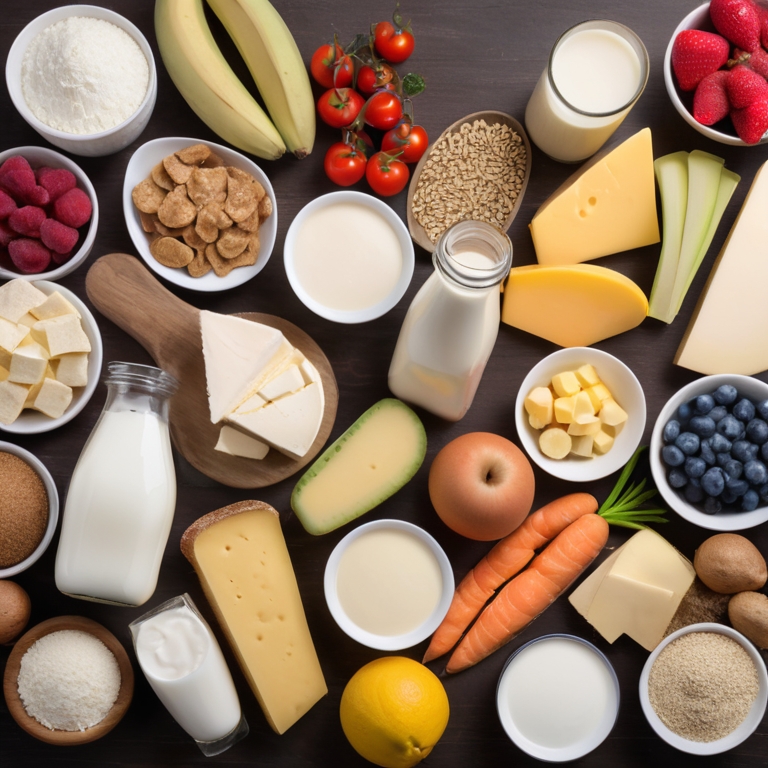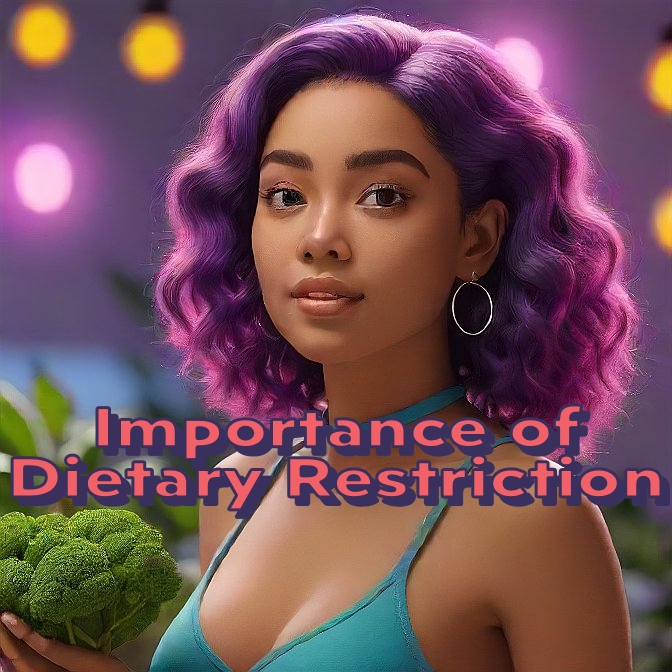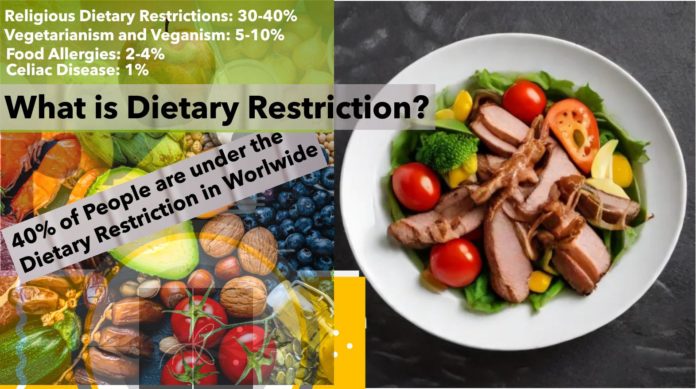Are you fed up with feeling restricted by your diet? Don’t worry, we’ve got you covered! This complete guide will take you into the world of tasty recipes for people with dietary restrictions. You’ll find yourself saying “What restrictions?” No matter if you avoid gluten, dairy, animal products, or follow a special diet, we have a recipe to satisfy every craving.
Get set to start a taste journey that will leave you feeling full, healthy, and happy!
Dietary Restrictions
A Hidden Opportunity Dealing with dietary restrictions can be tough, but it also gives you a chance to try new ingredients and tastes. If you focus on what you can eat instead of what you can’t, you’ll find a whole new world of cooking options. In fact, a new study shows that 52% of people with dietary restrictions think their diet has made their overall health and life better.
People follow many different eating plans such as gluten-free, dairy-free, vegan, keto, and low FODMAP diets. Each of these eating styles needs its own special way of cooking. Chefs have to swap out or skip certain ingredients, but they still want to keep the food tasty and healthy. So, if you’re interested in cooking for special diets, keep reading to the end and you’ll find lots of helpful ideas.
Understanding the fundamentals of these diets is crucial for successfully creating dietary restriction recipes that are not only safe to eat but also enjoyable.
Why is it important to follow dietary restrictions?
Recipes that cater to dietary restrictions do more than cut out certain foods. They promote a healthier way of life and let everyone savor tasty meals without feeling left out. These recipes also meet the growing need for all-inclusive dining options.
Whether you’re throwing a dinner party for guests with different food needs or just cooking for yourself or someone close to you knowing how to make meals that suit everyone is a valuable skill to have. What’s more, people are becoming more aware of food allergies and intolerances. This has made it crucial to have a go-to list of dietary restriction recipes you can trust.
A study by the Food Allergy Research & Education (FARE) shows that 32 million Americans have food allergies, including 5.6 million kids under 18. This fact highlights how important these special recipes are to keep people healthy and safe. Certain eating limits can be useful to handle particular health issues. These might include food allergies, things your body can’t digest well, or medical problems like diabetes or celiac disease.
What are the most common dietary Restrictions?
In today’s diverse and health-conscious world, dietary restrictions have become increasingly prevalent. People’s food choices face limits due to many reasons. These include religious rules moral views, health worries, and personal likes. It’s key for restaurants, party planners, and people to know common food limits.
This helps include everyone and makes sure all can enjoy safe good meals. From plant-based diets to no-gluten eating, these limits shape food trends and affect the food business. Let’s look at some common food limits people follow day to day.

Gluten-Free Dietary Restrictions:
If you can’t eat gluten, you know how hard it is to find tasty bread, pasta, and baked treats. Don’t worry, we’ve got a fix with our No-Gluten Garlic Bread. This recipe uses a mix of gluten-free flours and a surprise add-in (for example: cauliflower!) to make soft light bread. It’s great for dipping in your favorite soup or sauce.
Dairy-Free Delights
Folks who can’t handle lactose or have dairy allergies often struggle to enjoy comfort foods like mac and cheese or creamy soups. Our Dairy-Free Alfredo Sauce solves this problem letting you dig into a rich creamy pasta dish without any dairy. We make this sauce using cashews and almond milk as the base. It tastes so amazing, you’ll have a hard time believing it doesn’t contain dairy!
Vegan Victories
For vegans, finding satisfying recipes can be a real challenge. But with our Vegan Chili, you’ll never miss the meat. This hearty dish is packed with protein-rich beans, vegetables, and a blend of spices that will warm you from the inside out. Top it with avocado, cilantro, and a squeeze of lime for a flavor explosion that will have you coming back for seconds.
Paleo Perfection
If you’re following a paleo diet, you know that it can be tough to find recipes that are both delicious and compliant. But with our Paleo Zucchini Noodles with Pesto, you can enjoy a satisfying, nutrient-dense meal without sacrificing flavor. Spiralized zucchini noodles are tossed with a vibrant pesto made from fresh basil, pine nuts, and olive oil for a dish that’s bursting with flavor.
Keto Conquests
Keto dieters, we have not overlooked you! When you’re looking for something sweet, our Keto Chocolate Chip Cookies are just what you need. These cookies that are made from almond flour, coconut oil and sugar-free chocolate chips have little carbs but great flavour. You can enjoy them with a cup of herbal tea without feeling guilty.
Low FODMAP
The Low FODMAP diet is a specific eating plan aimed at managing symptoms of Irritable Bowel Syndrome (IBS) and other functional gastrointestinal disorders. FODMAPs are short-chain carbohydrates and sugar alcohols in several foods that may not be well absorbed in the small intestine.
The acronym FODMAP stands for Fermentable Oligosaccharides, Disaccharides, Monosaccharides, and Polyols. They can increase water content in the gut, ferment quickly by gut bacteria causing bloating, gas, pain abdomen or even diarrhea.

The Low FODMAP Diet Process:
- Elimination Phase: In this initial phase high FODMAP foods have to be eliminated from the diet for approximately 4-6 weeks which helps reduce symptoms as well as determine their potential triggers. Reintroduction Phase: Gradually reintroducing specific FODMAPs one at a time will help determine which ones trigger symptoms and how much of it can be handled.
- Reintroduction Phase: Foods that contain precise FODMAPs are gradually brought back one by one. It is this process that helps in identifying the types of FODMAPs that trigger symptoms and how much each person can tolerate.
- Personalization Phase: After pinpointing personal triggers, the diet is personalized to consist of low FODMAP foods that do not cause symptoms enabling a more varied and balanced diet.
Common High FODMAP Foods:
- Oligosaccharides: They are present in wheat, onions, garlic, legumes and some fruits and vegetables.
- Disaccharides: Lactose, which is present in milk, yogurt and soft cheeses.
- Monosaccharides: Fructose exists in honey, apples, high-fructose corn syrup among other fruits.
- Polyols: These refer to sugar alcohols such as sorbitol or mannitol found in certain fruits like apples including stone fruits; they may also be found in veggies or artificial sweeteners.
Benefits of the Low FODMAP Diet:
- Symptom Relief: Studies have shown that about 75% of individuals who have IBS experience significant relief from their symptoms when adhering to this diet.
- Improved Quality of Life: Symptom management means for people a much higher quality life with less discomfort and active lifestyle.
- Customizable: This phase is essentially about coming up with a personalized diet based on what each person prefers or needs.
Tips for Creating Flavorful Dietary Restriction Recipes
You can instantly create flavorful meals while adhering to dietary restrictions like a pro. Here are some tips to help you master it:
1. Use Fresh Herbs and Spices: Fresh herbs and spices can definitely diminish any meal. For instance, basil is one of the herbs that can be used to spice up great-tasting gluten-free pasta while nutmeg may offer warmth to dairy-free desserts.
2. Don’t Be Afraid to Experiment: A diverse cuisine does not mean sticking to tasteless food when cooking within dietary limits. For example, you could substitute rice for low-carb stir fry using cauliflower or replace normal pasta with zucchini noodles.
3. Balance Textures: The perfect meal consists of various textures such as soft, hard, and liquid ones that blend well together. A vegan salad might contain crunchy roasted chickpeas, creamy avocado, and fresh leafy green vegetables for instance.
4. Focus on Presentation: We consume things we see first before anything else so make sure that your foods are as appealing visually as well. Thus ensure that garnishing with fresh herbs is done, drizzle sauces creatively and use bright colored ingredients to attractively present the dishes.
5. Prepare Ahead: Meal prepping is very significant when it comes to food restrictions. A plan guarantees that you have all the required components with you and spares you emergency replacements which are in most cases inappropriate. For example, doing some ingredient preparation beforehand e.g cucumbers slicing or sauces preparation would assist in saving time on busier weekdays.
Importance of Dietary Restriction in Today’s World
- Weight Management: One of the major advantages of diet control is that it aids in body weight management. By regulating calorie consumption, one can prevent obesity and related ailments such as diabetes and heart failure.
- Long life: Studies show that diet control can prolong life span. For example, research on different organisms including yeast, worms and mammals suggests that caloric restriction causes longer life span and healthier aging processes.
- Decreased Chronic Disease Risk: Chronic disease risk is lower with dietary restriction. This helps reduce oxidative stress and inflammatory effects which contribute to diseases like cancer, cardiovascular diseases besides neurodegenerative disorders.
- Better Metabolic Health: Dietary restriction can enhance metabolic health through increased insulin sensitivity and lowered blood sugar levels. This will definitely help people who are at risk of having type 2 diabetes.
- Improved Cognitive Functioning: According to some researches dietary restriction has cognitive function enhancing effect and decreases the probability of having neurodegenerative disorders. By supporting autophagy, a cellular cleaning process, dietary restrictions can contribute to brain wellness.
- Elevated Monitors of Oxidants: The body’s oxidant combating ability has been proven to increase with caloric restriction, decreasing free radical damage hence enhancing general well-being.
- Stress Tolerance: The body’s ability to respond to stress positively is improved through dietary restriction. It causes the synthesis of heat- shock proteins, which are important in cellular protection and repair.
- Restoration of Tissues: Caloric restriction has been related to tissue repair improvement processes that help heal wounds and decrease toxicity from injurious substances.

Benefits of Dietary Restriction
- Supports Healthy Aging: Individuals who consume fewer calories can compare themselves with healthier aging people therefore promoting healthy longevity.
- Enhances Quality of Life: Many people reveal that an improved way of life by following a dieting plan increases mood and energy levels.
- Promotes Mindful Eating: When people practice dietary restriction they become more conscious about what they take in their bodies leading to a shift in eating patterns for better nutrition.
- Social and Cultural Adaptability: It helps to learn about dietary restrictions because it helps in social relations, especially when it comes to diverse areas where food preferences and restrictions come into play making us more inclusive and aware.
- Encourages Nutrient-Dense Choices: When a person restricts their diet, they often shift to eating nutrient-dense foods ensuring that they continue receiving essential vitamins as well as minerals at the same time maintaining a lower calorie intake.
FAqs
What are some common substitutions in dietary restriction recipes?
The use of replacements is vital within limited diet food. For example, in gluten free baking baking powder can be replaced with either almond or coconut flour instead of wheat flour; moreover there is no dairy product in vegan cookery so cheese is replaced by nutritional yeast to make dishes for us. With this alternative, it is possible for people to have meals like their relatives without posing any health risks.
Which dessert helps to lose weight faster?
Most of the sweets found in shops are made from milk products causing them to contain more calories than others. Nevertheless, there exists other choices of dessert that assist individuals during dieting as shown below:
- Low Calorie Ice Cream or Frozen Yogurt
- Vegan Dark Chocolate Hummus
- Greek Yogurt Fruit Tart
- Apple Pie Smoothie
- Low sugar cookies
- Dark Chocolate
- Fruit
Are there any aps to manage dietary restriction?
yes! here are some of those apps name, you can found it on Apple Store and Play Store.
- MyFitnessPal: Tracks nutrients and allows custom diet settings
- Fooducate: Scans barcodes and grades food based on nutritional value
- ShopWell: Helps find products matching dietary needs while shopping
- Spokin: Focuses on food allergies and intolerances
- iEatOut Gluten Free & Allergy Free: Assists with restaurant menu navigation
- Fig: Personalized food scanner for various dietary restrictions
- Spoonful: Scans products for specific ingredients to avoid

